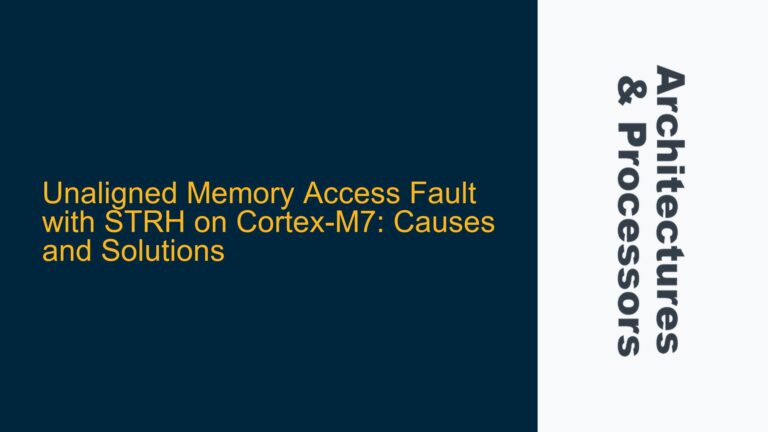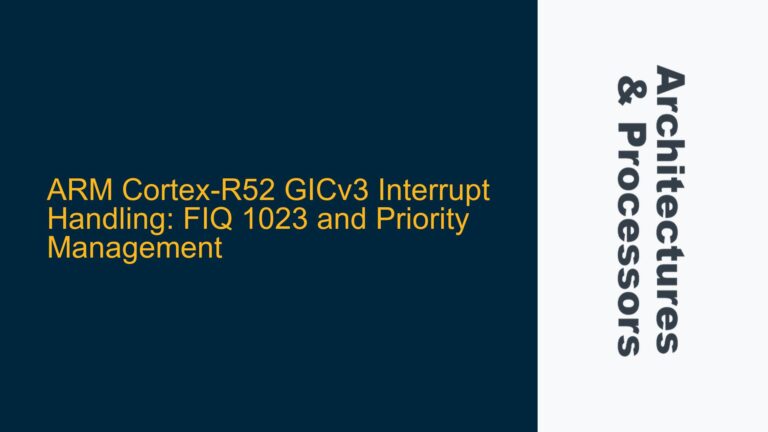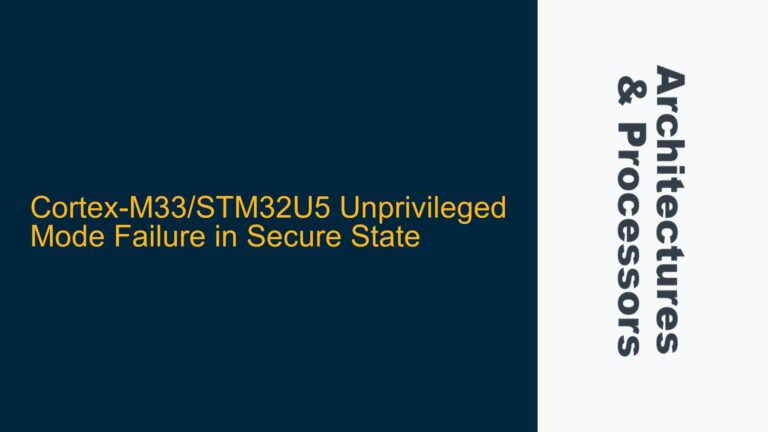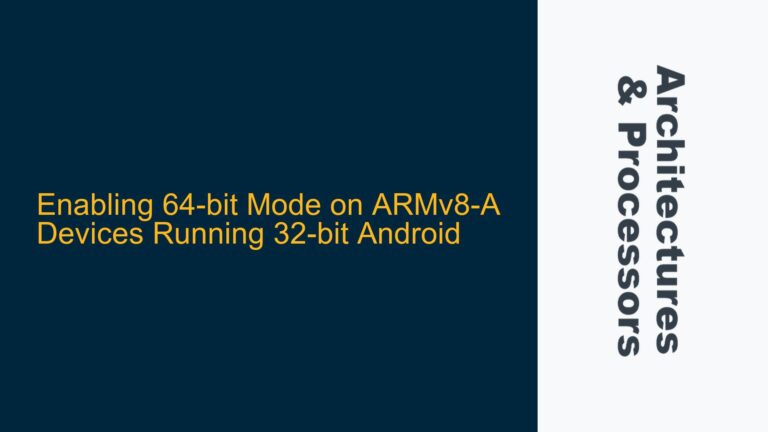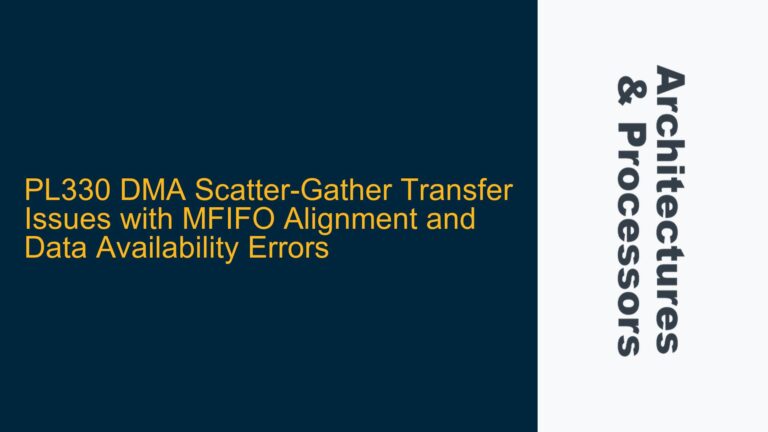Memory Types in AXI4 Protocol and Their Role in Cache Coherency
The AXI4 protocol, a cornerstone of modern ARM-based systems, defines several memory types through the AxCACHE signals. These memory types are critical in determining how memory transactions are handled, particularly in systems with caches and coherency protocols like ACE (AXI Coherency Extensions). The AxCACHE signals specify attributes such as cacheability, bufferability, and memory type, which directly influence how data is accessed, stored, and shared across the system. Misunderstanding or misconfiguring these memory types can lead to performance bottlenecks, data corruption, or coherency issues, especially in multi-core or multi-master systems.
The AxCACHE signal is a 4-bit field in the AXI4 protocol, and each bit combination corresponds to a specific memory type and attribute. These attributes include:
- Cacheability: Whether the transaction can be cached.
- Bufferability: Whether the transaction can be buffered.
- Memory Type: The type of memory being accessed, such as Device, Normal, or Strongly Ordered.
These attributes are not just theoretical constructs; they have practical implications on how data flows through the system. For instance, a misconfigured memory type can lead to stale data in caches, incorrect speculative reads, or even system crashes due to coherency violations. Understanding these memory types is essential for designing efficient and reliable ARM-based systems.
AxCACHE Signal Misconfiguration and Cache Coherency Challenges
The AxCACHE signal’s configuration is pivotal in ensuring proper cache coherency, especially in systems that employ ACE or other coherency protocols. The memory types defined by AxCACHE signals include:
- Device Memory: This type is used for memory-mapped I/O devices. It is non-cacheable and non-bufferable, meaning every read or write operation must reach the device without any intermediate caching or buffering. This ensures that the device always sees the most up-to-date data.
- Normal Memory: This type is used for regular system memory. It can be cacheable and bufferable, allowing for performance optimizations through caching and write buffering. However, this also introduces the risk of coherency issues if not managed correctly.
- Strongly Ordered Memory: This type is used for memory regions where the order of transactions must be strictly preserved. It is non-cacheable but may be bufferable, depending on the configuration. This is crucial for scenarios where the sequence of operations is critical, such as in certain hardware control registers.
Misconfiguring these memory types can lead to several issues:
- Stale Data in Caches: If Normal Memory is incorrectly marked as Device Memory, the system may cache data that should not be cached, leading to stale data being read from the cache instead of the actual memory.
- Coherency Violations: In multi-core systems, incorrect memory type settings can cause coherency protocols to fail, resulting in data corruption or system instability.
- Performance Bottlenecks: Overly restrictive memory type settings, such as marking Normal Memory as Strongly Ordered, can prevent the system from leveraging caching and buffering, leading to unnecessary performance degradation.
Correctly Configuring AxCACHE Signals for Optimal Performance and Coherency
To avoid the issues mentioned above, it is crucial to correctly configure the AxCACHE signals based on the memory type and the system’s requirements. Here are the steps to ensure proper configuration:
-
Identify Memory Regions: Begin by identifying the different memory regions in your system and their intended use. For example, memory-mapped I/O regions should be marked as Device Memory, while regular system memory should be marked as Normal Memory.
-
Set AxCACHE Bits Appropriately: Based on the memory type, set the AxCACHE bits as follows:
- Device Memory: Set AxCACHE[3:0] to 0b0000 (non-cacheable, non-bufferable).
- Normal Memory: Set AxCACHE[3:0] to 0b1111 (cacheable, bufferable) if caching and buffering are desired. Adjust the bits if only caching or only buffering is required.
- Strongly Ordered Memory: Set AxCACHE[3:0] to 0b0010 (non-cacheable, bufferable) or 0b0000 (non-cacheable, non-bufferable) depending on whether buffering is allowed.
-
Verify Coherency Protocol Compatibility: Ensure that the AxCACHE settings are compatible with the coherency protocol in use. For example, in an ACE system, Normal Memory should be cacheable to allow for coherency management by the protocol.
-
Test and Validate: After configuring the AxCACHE signals, thoroughly test the system to ensure that there are no coherency issues, performance bottlenecks, or data corruption. Use tools like ARM DS-5 or Lauterbach Trace32 to monitor cache behavior and coherency transactions.
-
Optimize for Performance: Once the basic configuration is validated, consider optimizing the AxCACHE settings for performance. For example, in a system with frequent DMA transfers, marking the DMA buffer as Normal Memory with caching enabled can significantly improve performance.
-
Document Configuration: Finally, document the AxCACHE settings for each memory region. This documentation will be invaluable for future debugging, optimization, or system upgrades.
By following these steps, you can ensure that the AxCACHE signals are correctly configured, leading to a system that is both performant and reliable. Proper configuration of memory types is not just a theoretical exercise; it has real-world implications on the system’s behavior, especially in complex, multi-core environments.
In conclusion, the AxCACHE signals in the AXI4 protocol play a critical role in defining memory types and attributes, which in turn affect cache coherency and system performance. Misconfiguring these signals can lead to significant issues, but with a thorough understanding and careful configuration, you can avoid these pitfalls and build robust, high-performance ARM-based systems.

